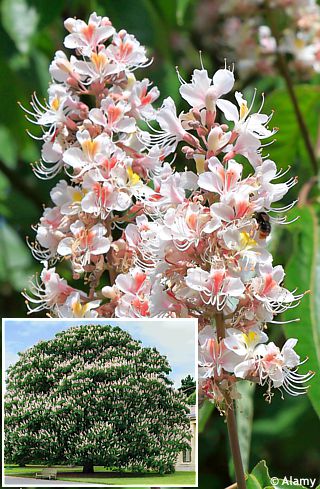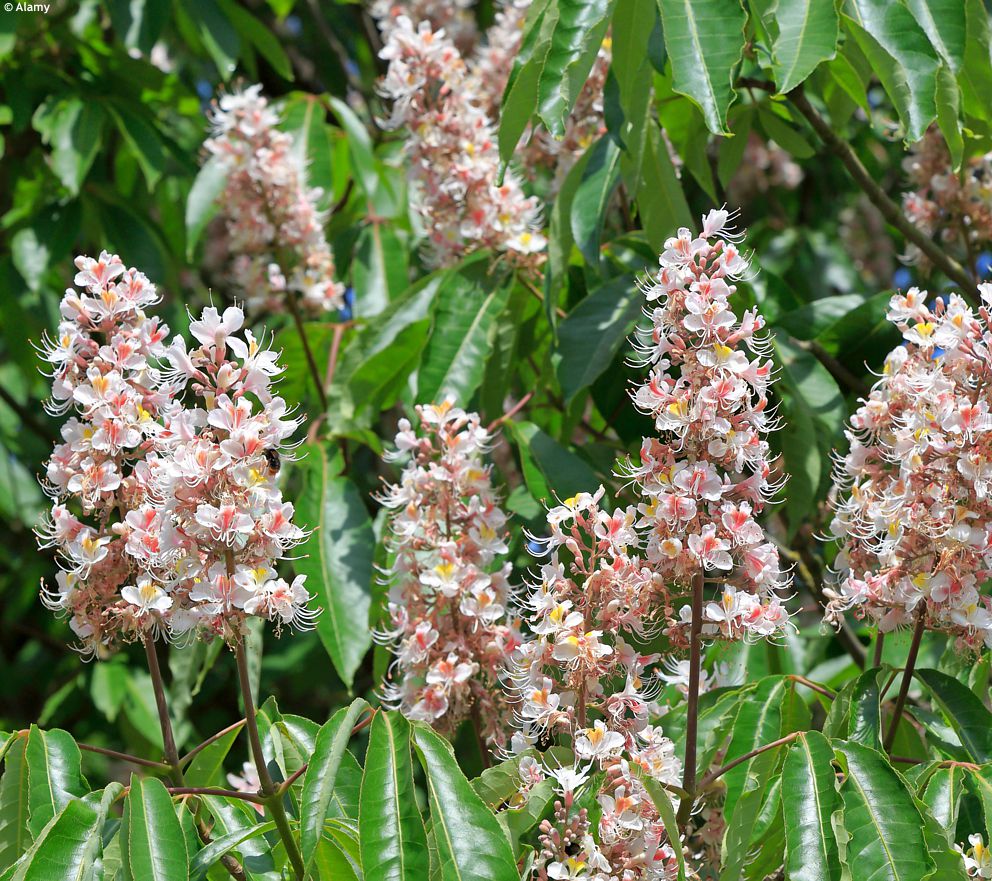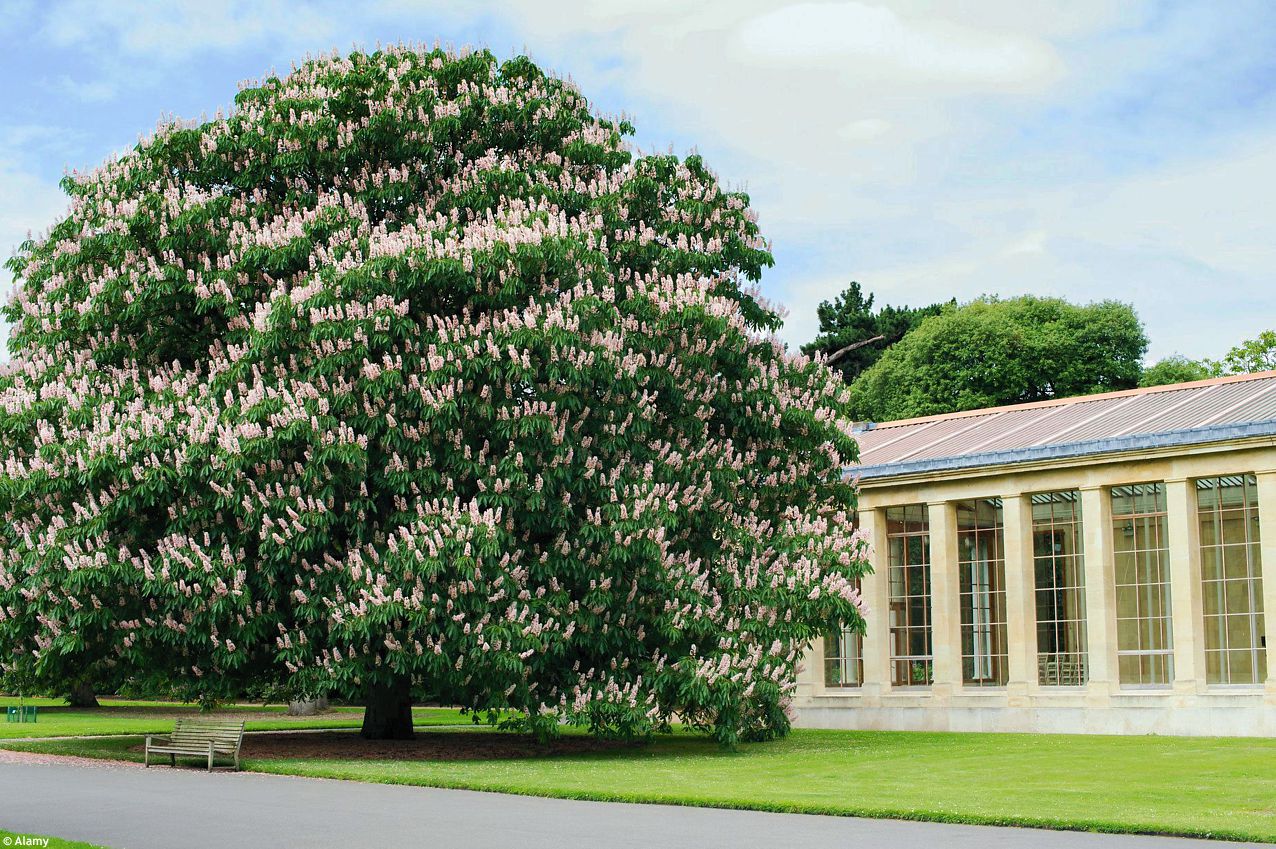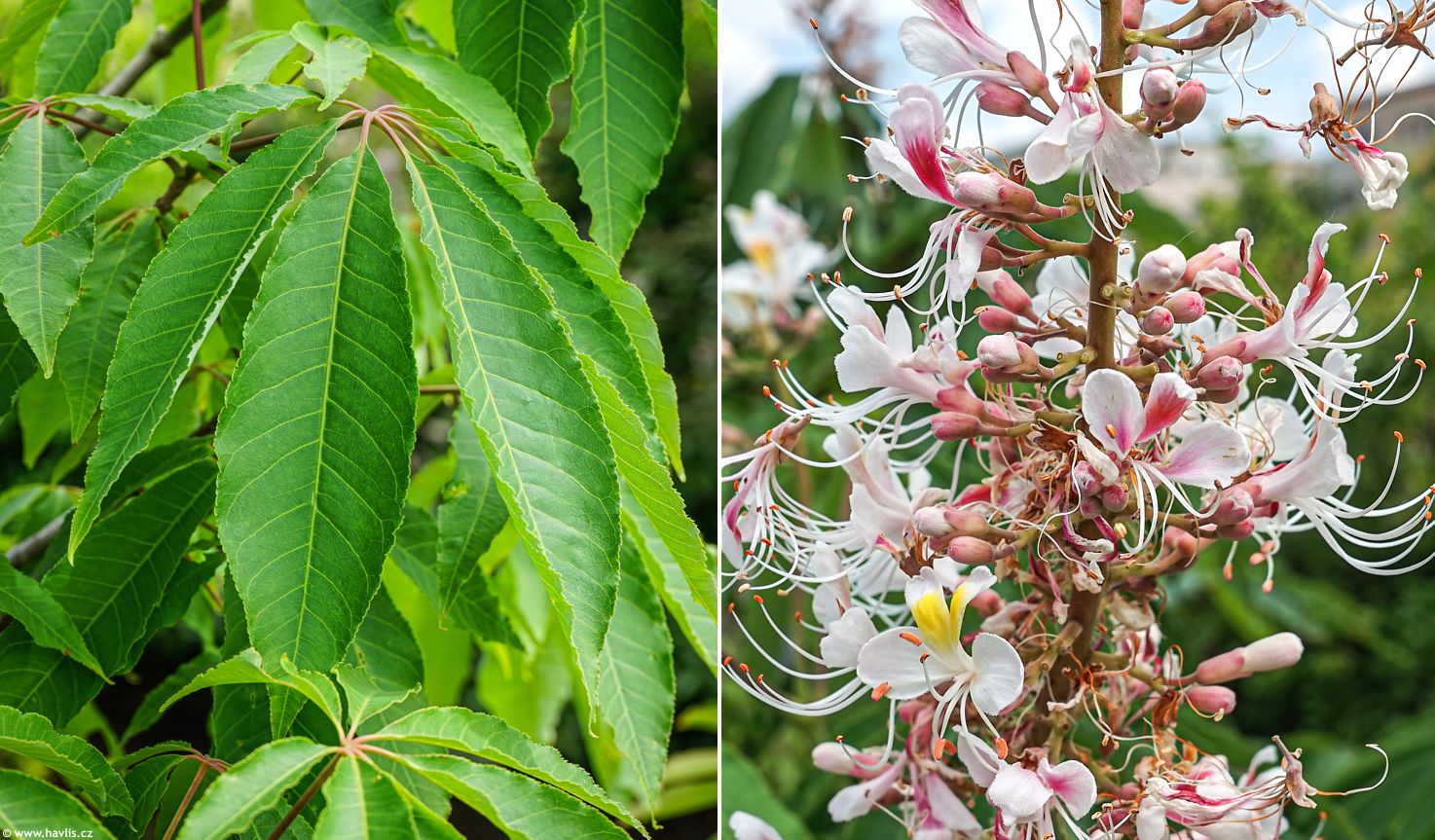Aesculus indica 'SYDNEY PEARCE' Indian horse chestnut, Himalayan horse chestnut
size/type
tall tree,tall tree
usual height
10-15m
usual width
12-18m
leaves
deciduous broadleaf
colour of leaves
flowers
showy
colour of flowers
blooming time
June
location
full sun
soil type
any (acidic to alkaline)
soil moisture requirements
evenly moist but well-drained
USDA zone (lowest)
5b (down to -27°C)
winter protection
for zone 5+6

for zone 7

categorized
Aesculus
Do you have a large space in your garden (or a park or arboretum) and are you looking for a beautiful tree that will fill that space with both plenty of mass and dignity? Indian or Himalayan horse chestnut is unarguably one of the best choices ever because it has everything - beautiful flowers, exotic leaves, plenty of mass, and an extremely elegant habit. It comes from the Himalayan lowlands between Kashmir and western Nepal and performs well even in Central European conditions.Description of the plant:
Sydney Pearce is an English variety of Indian horse chestnut, selected by the man of the same name in 1935, when he was working as an assistant curator of the Royal Gardens at Kew near London, England. It boasts unique, gaura-like flowers with conspicuous, deep pink blotch on a white background. Even more interesting is the fact that some flowers do not have a pink blotch but a yellow one. I bet that someone somewhere must have counted the ratio between yellow-blotched and pink-blotched flowers, surely it was not me – sorry, folks. They are arranged in upright, elegantly narrow panicles 25-35 cm tall and begin blooming in June for 2-3 weeks. I dare to say that a blossoming tree is as beautiful as magnolia trees in full bloom in spring.In late summer ripen pear-shaped, smooth capsules hiding round chestnuts with glossy, dark brown peel, the kernels of which were used in India to make cheap, bitter flour. It was mixed with wheat flour when making chapati flatbreads or sweet halwa.
Leaves are deciduous, palmately divided into 7 broadly lanceolate, up to 30 cm long leaves with purple pink stalks. They are bright green, partially glossy and usually have smooth margins, but you can find clones with slightly serrated margins. They turn orange in autumn. The compound leaves are slightly drooping which may give the impression that the tree needs more watering, but this is simply how it naturally looks.
Indian horse chestnut grows quickly and Sydney Pearce variety is even more vigorous and dense, so it soon develops its typical, broadly oval to dome-shaped, very picturesque habit with a canopy whose side branches arch to such an extent that you can eventually see only about half the trunk. If you want to walk or drive under the tree, cut these branches off. Do any pruning in late winter before the tree wakes up. It grows large and in maturity its width will be greater than its height.
Despite its exotic origin, Indian horse chestnut prefers a cooler climate, and it copes well in Central Europe. It likes humidity more than dry heat which it can handle only in constantly moist ground. It is not demanding as to soil quality. Grow it in evenly moist but well-drained soil in full sun. The hardiness of this variety is even better than of the species, reaching around -25 °C without any winter protection, perhaps a bit more - not yet tested.
Last update 19-06-2023
QUICK PRICE OVERVIEW
CURRENTLY SOLD OUT
















